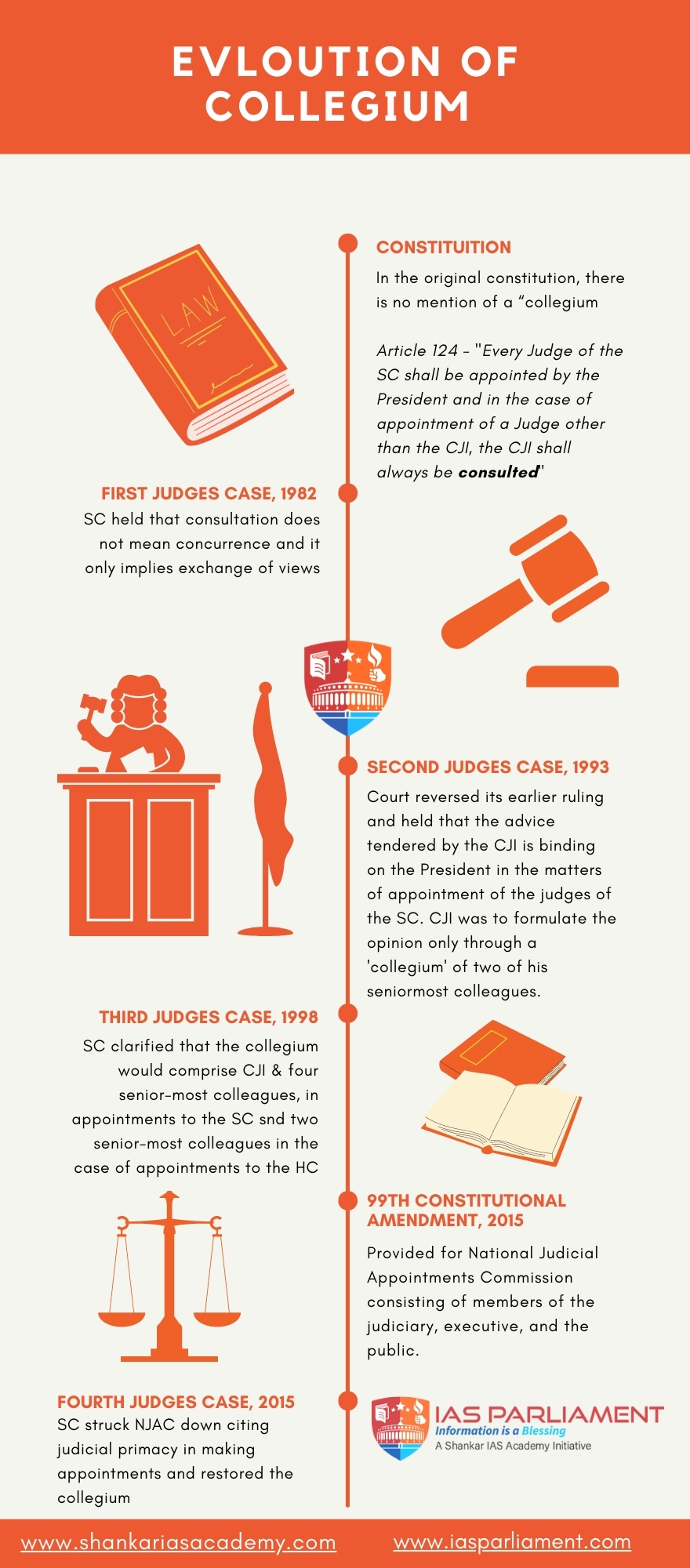7667766266
enquiry@shankarias.in
Why in news?
The Supreme Court of India’s collegium has made proposals to alter the existing composition of various High Courts.
What is the proposal about?
What is the procedure for appointment of judges?
What is a collegiums and how it evolved?

How can the prestige of High Courts be restored?
Source: The Hindu